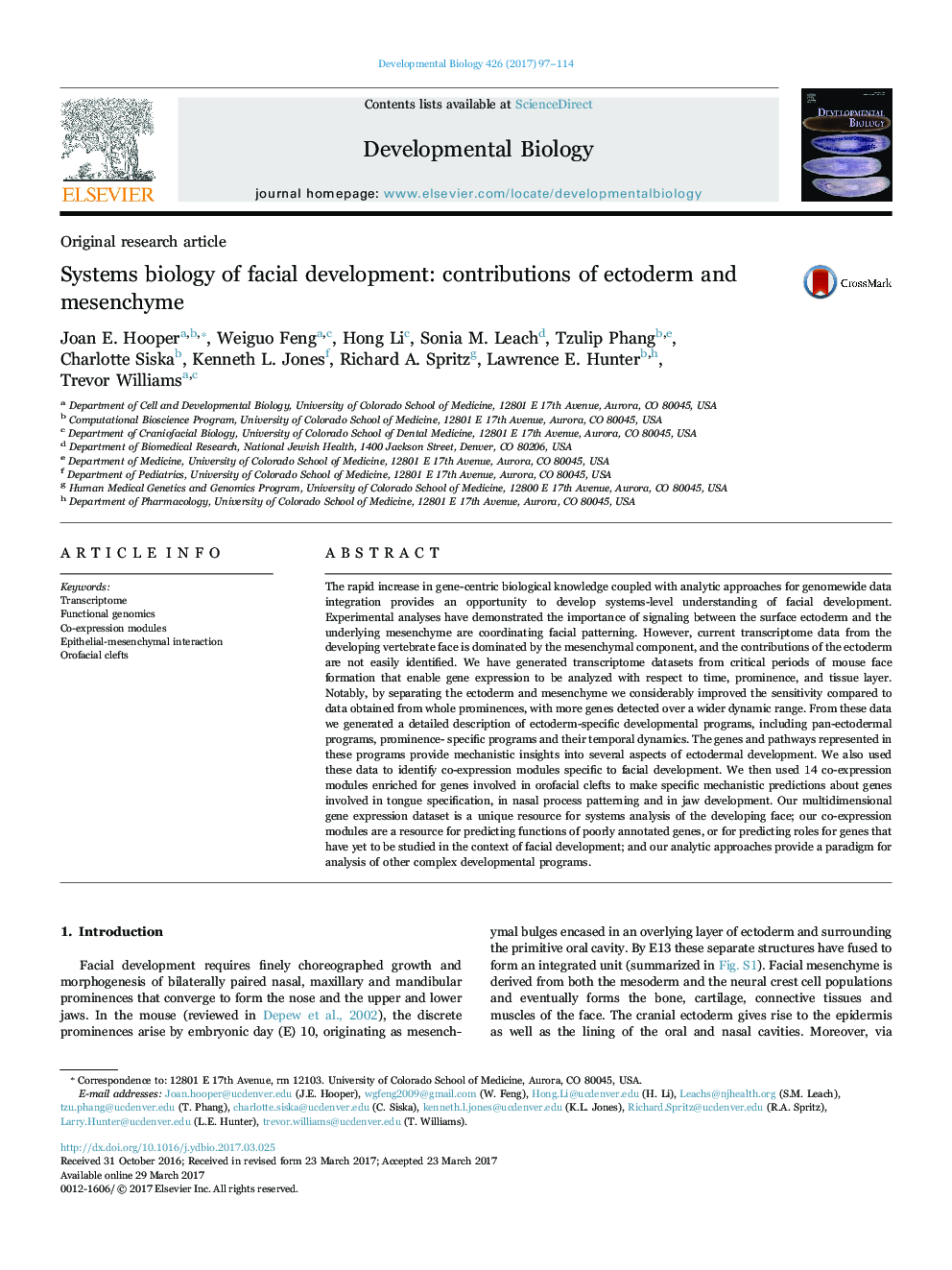| Article ID | Journal | Published Year | Pages | File Type |
|---|---|---|---|---|
| 5531715 | Developmental Biology | 2017 | 18 Pages |
â¢A statistically robust and extensively verified multidimensional gene expression resource for mouse facial development.â¢Data derived from separated ectoderm and mesenchyme from each facial prominence at E10.5 through E12.5.â¢A facial ectoderm developmental program highlights cell-cell signaling, epithelial diversification and maturation.â¢Facial development co-expression modules identify sub-programs relevant to patterning, morphogenesis and pathogenesis.â¢A resource for interpreting clinical genetic data pertaining to facial development, morphology and orofacial clefting.
The rapid increase in gene-centric biological knowledge coupled with analytic approaches for genomewide data integration provides an opportunity to develop systems-level understanding of facial development. Experimental analyses have demonstrated the importance of signaling between the surface ectoderm and the underlying mesenchyme are coordinating facial patterning. However, current transcriptome data from the developing vertebrate face is dominated by the mesenchymal component, and the contributions of the ectoderm are not easily identified. We have generated transcriptome datasets from critical periods of mouse face formation that enable gene expression to be analyzed with respect to time, prominence, and tissue layer. Notably, by separating the ectoderm and mesenchyme we considerably improved the sensitivity compared to data obtained from whole prominences, with more genes detected over a wider dynamic range. From these data we generated a detailed description of ectoderm-specific developmental programs, including pan-ectodermal programs, prominence- specific programs and their temporal dynamics. The genes and pathways represented in these programs provide mechanistic insights into several aspects of ectodermal development. We also used these data to identify co-expression modules specific to facial development. We then used 14 co-expression modules enriched for genes involved in orofacial clefts to make specific mechanistic predictions about genes involved in tongue specification, in nasal process patterning and in jaw development. Our multidimensional gene expression dataset is a unique resource for systems analysis of the developing face; our co-expression modules are a resource for predicting functions of poorly annotated genes, or for predicting roles for genes that have yet to be studied in the context of facial development; and our analytic approaches provide a paradigm for analysis of other complex developmental programs.
